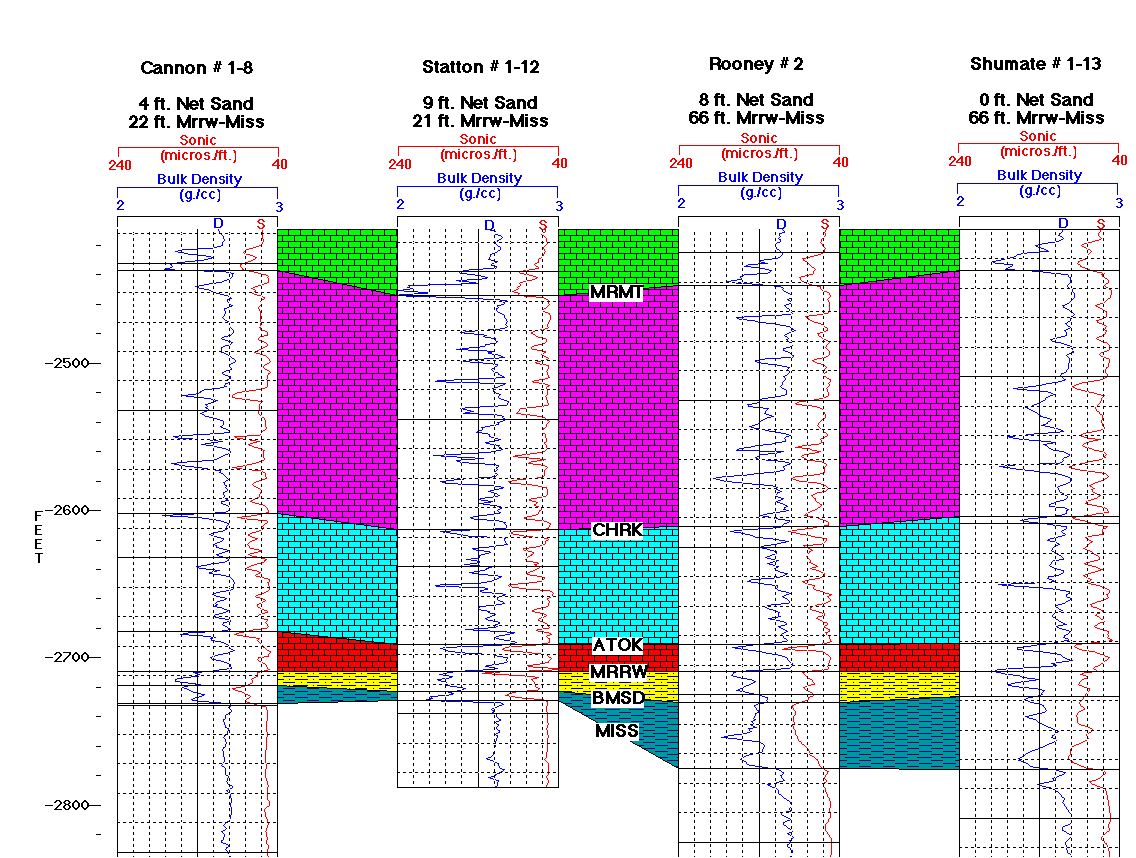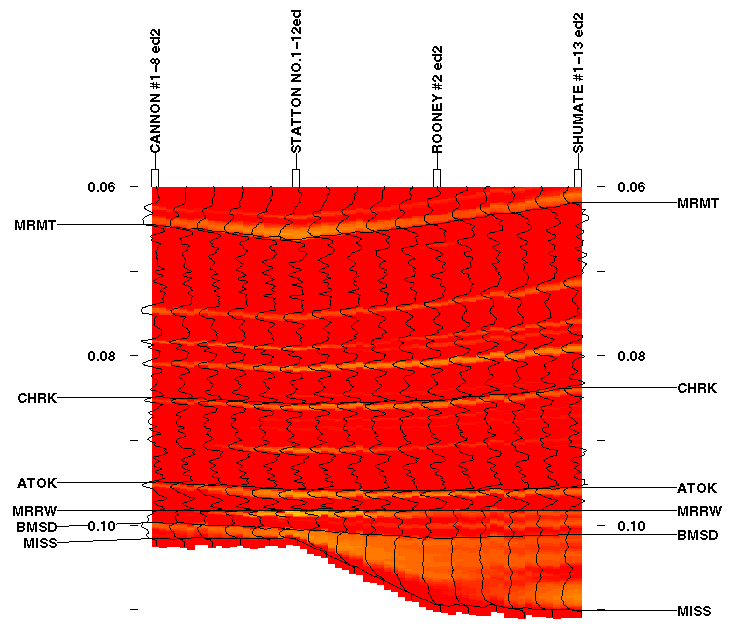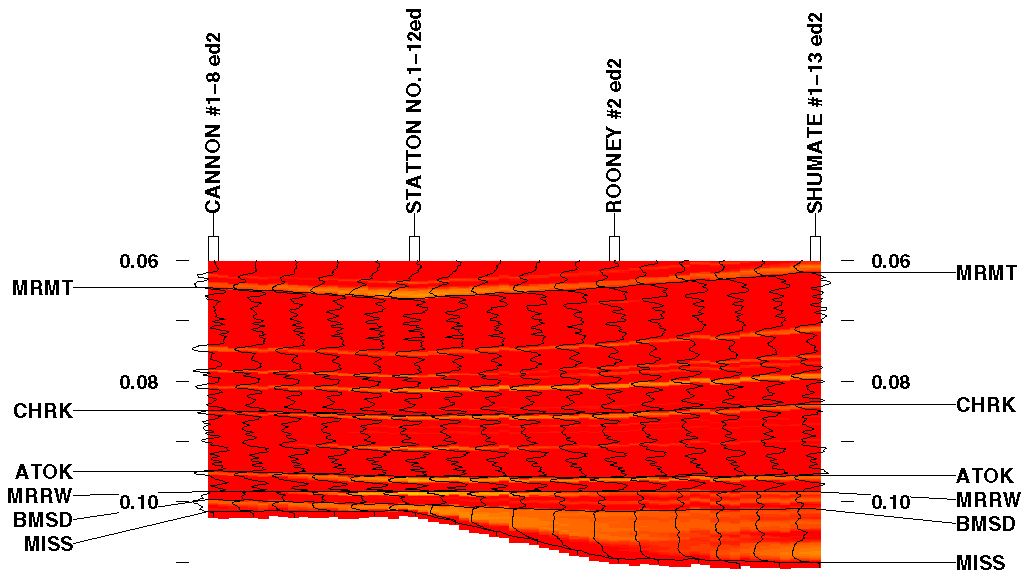
Kansas Geological Survey, Open File Report 96-50
Figure 7a--Multi-well model cross section. Sonic curves are red and bulk density curves are blue. Vertical scale in feet below sea level. Horizon (tops) abbreviations are Marmaton (MRMT), Cherokee (CHRK), Atoka (ATOK), Morrow (MRRW), base of upper Morrow sandstone (BMSD), and Mississippian (MISS).

Figure 7b--Interpolated single well acoustic impedance model. Reds represent limestones, sandstones, and higher velocity shales. Yellows and oranges represent lower velocity shales. Vertical scale in seconds of two-way travel time from the top of the model and is approximately twice that of the seismic models. A black and white verion of this plot is available.

Figure 7c--Same as Figure 7b but with a vertical scale approximately the same as the seismic models. A black and white verion of this plot is available.

The log interpolation model of this cross section is shown as a vertically expanded version in Figure 7b and at the same scale as the synthetic seismic section in Figure 7c. The log interpolation model is generated and displayed in the same way as the interpolation model for the single well case. The color representation is also the same. One difference, however, is that this log interpolation model is flattened along the top of the Morrow to simplify seismic interpretation of the Morrow-Mississippian interval.